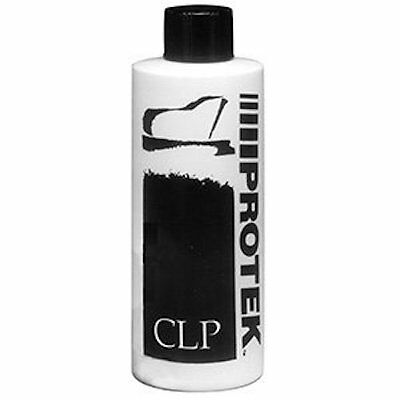-40%
KS-1B MIDI Strip/Controller Add-on/Retrofit to Acoustic Piano or Keyset/Keyboard
$ 525.36
- Description
- Size Guide
Description
This is a NOS (new, old stock) Gulbransen KS-1B MIDI strip that has never been installed. The system is about 20 years old but still very useful and much more affordable than the optical systems currently sold new. I obtained a few of these when the Baldwin factory closed in October, 2018.What is included in this kit:
One KS1 Control Unit
One SS88 Opto-Electronic Keyboard Sensor Strip
One MIDI cable (5 pin DIN to USB)
One long (6') 6-conductor connector cable
One short (6") 6-conductor connector cable
One 6-conductor adapter to interconnect the two 6 conductor cables
One 12 VDC 1 Amp Power Supply (Wall Transformer)
One Sustain Pedal Sensor (a leaf switch - this differs from the magnetic switch shown in the manual)
One Hardware Kit consisting of: Miscellaneous screws, tie wraps, and other mounting hardware
What you will need to use this kit that is not included:
A MIDI sound generating device (MIDI tone generator, sound generator) or iPad (I recommend no earlier than Gen4) or similar device with Garage Band (free) or similar app installed.
With an iPad/iPhone device you will need what Apple calls a USB Camera adapter with a connector suitable to your device (i.e. a 4th Gen iPad uses a "lightening" connector)
If you plan to use a non Apple device you will need to check to see if it supports MIDI input and determine what hardware will be needed to connect it.
Patience, some hand tools, a willingness to call the included phone number (mine) if you hit a brick wall.
Performing this installation will take a bit of skill but in most cases will not involve expensive tools. If you would like to see the installation manual for this kit, look here: http://raglandpiano.com/index.php/ks1install/
If your piano action or keys need work, we sell the parts to bring it back to life too. Look at my eBay store for anything from minor felt pieces to complete hammer sets and more.
This system is originally intended to add MIDI capability to an acoustic piano and was sometimes paired with a system that blocked the hammers from striking the strings, essentially giving you a digital piano. Most of the systems that blocked the strings modified the touch of the piano somewhat, as the letoff either needed to happen sooner (because the hammer travel distance was shortened so it wouldn't strike the string) or, somewhat worse, the keys didn't go their full travel (keydip). Of course, you don't have to have a "silent piano" mechanism if you intend to layer sounds with your piano (strings, etc.).
Here's what I really like to use this type of system for: installation in an old piano where the tuning pins are no longer holding, the strings are dead, there are cracks in the bridge(s) or a soundboard issue. Correction of any of those issues is usually very expensive. If you have any of these issues but have a piano action and keys that play well (or can be made to play well with minimal work) adding this strip may be something to consider. The old strings, tuning pins and even the plate can be removed (if you want to go to the extra trouble and want the benefit of a lighter cabinet), a stop rail for the hammers installed (they'll need to stop against something that is set at the correct distance if there are no strings there), the MIDI strip installed under the keys and plugged into your choice of device to generate sounds (a MIDI sound module, an iPad/iPhone with Garage Band, etc.) and you'll be able to use your piano again (with an option for headphones!). Turn Grandma's old clunky piano into something useful.
There is no sound module/generator or speakers included with this setup. You will have to connect it to something in order for it to generate sounds you can hear. It's very simple and inexpensive (if you already own an iPod or iPad) to use the Garageband app and a set of headphones. You'll need what Apple calls a "camera adapter" to connect to our system which uses either a 5 pin MIDI port or USB (we include the cord that adapts from the 5 pin to the USB). Of course, you can also connect a sound module and whatever speakers that module supports. I recommend against anything Bluetooth due to the lag time from pressing a key to the sound coming from a speaker. Stick with wired speakers unless/until technology eliminates the associated lag time. Questions? Contact me!
I'm Howard Gustafson and I've been a piano technician 33+ years, specializing in retrofitting digital systems for most of that time. Your success using my products is extremely important to me so I welcome
ANY questions you have regarding this setup.

















